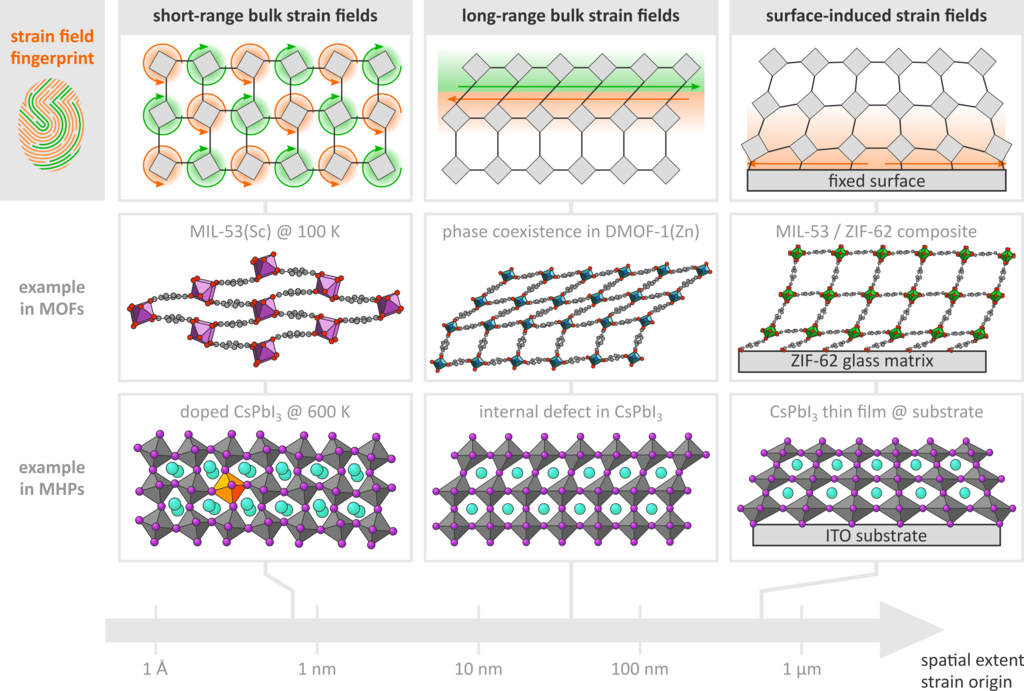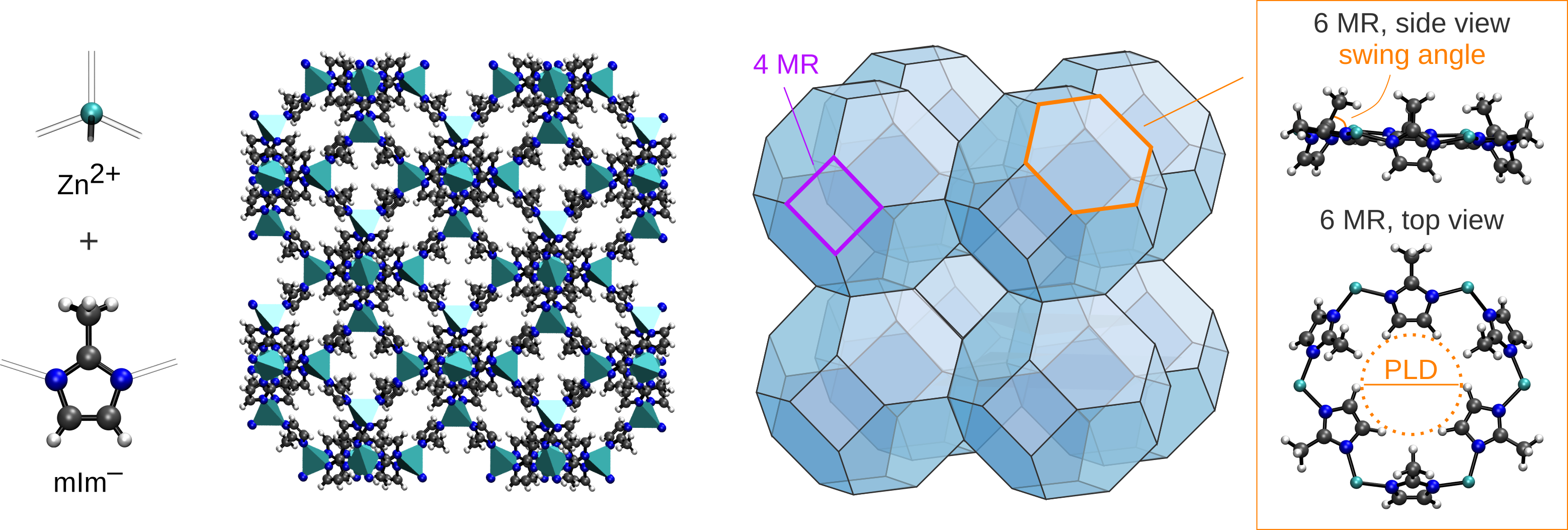Small changes with long-range impact: Developing cooperative strain fields to study the effect of local disorder in zeolitic imidazolate frameworks
Small changes with long-range impact: Developing cooperative strain fields to study the effect of local disorder in zeolitic imidazolate frameworks
Promotor(en): S.M.J. Rogge /28146 / Nanoporous materialsBackground and problem
Local defects are present in every realistic solid-state material at room temperature, impacting the material’s properties. They can engender a welcome effect, such as increasing the efficiency of semiconductor devices or modifying the color and associated value of diamonds. In many cases, however, the impact of isolated defects on the material properties is not so clear cut. This is for instance the case for metal-organic frameworks (MOFs). MOFs are nanoporous materials that are proposed for a variety of industrial applications including energy storage, gas separation, and the capture of greenhouse gases due to their attractive properties and vast design opportunities. These scaffold-like materials were originally thought of as being perfectly ordered, crystalline materials. However, it has become increasingly clear that spatial disorder is inherently present in these materials and alters their macroscopic behavior. As shown in Figure 1, this leads to strain, as the material locally deviates from its equilibrium structure. Even though these strain fields originate from very local defects, they can potentially extend throughout the crystal over several tens to hundreds of nanometers, much larger than the nanometer-sized defects they originate from, and therefore impact the macroscopically observed, cooperative response of these materials. As a result, introducing spatial disorder in MOFs–especially isolated disorder that occurs on a nanometer length scale–has emerged as an alternative pathway to design defect-engineered MOFs towards specific applications.1

Figure 1: Overview of typical strain fields introduced by different types of spatial disorder, showing that even short-range defects may induce strain fields that alter the material far beyond the size of the defect.
To fully exploit the potential of defects to promote MOFs towards functional materials, it is essential to identify how the presence and distribution of defects alter the strain fields inside these MOFs. This is especially so for the MOF subclass of zeolitic imidazolate frameworks (ZIFs), which form cage-like materials, as shown in Figure 2. These cages make them very interesting for various gas adsorption and separation applications, as well as for shock absorption.2 However, defects that are inherently present in ZIFs are expected to largely impact their gas sorption properties, although it remains unclear how these defects interact with the adsorption and diffusion of gas molecules in ZIFs. The concept of strain fields as outlined in Figure 1 may prove vital in this respect, as it may explain how the strain fields, generated by the defects on the one hand and the guest molecules on the other hand, cooperatively affect the structure of the material.
Goal
The goal of this thesis is to study how isolated spatial disorder and guest molecules each generate strain fields in a variety of ZIFs and cooperatively alter the mechanical behavior of these materials. We will focus on ZIF-8, ZIF-4, and ZIF-7, which all show large-amplitude phase transitions under well-defined changes in temperature, pressure, or gas loading. Recently, Schmidt and co-workers performed an extensive study of possible localized defects in ZIF-8.3 In this thesis proposal, we first aim to propose different defect mechanisms based on our earlier experience with defective MOFs, building on this earlier work. Furthermore, the energetics of these hypothetical defects will be systematically evaluated, which will allow us to formulate the most probable defect mechanisms present in the three aforementioned ZIFs. In addition, disorder in this material may also be introduced by allowing for mixed metal nodes, further tuning their mechanical performance.

Figure 2: Atomic representation of the cage-structure of ZIF-8, the prototypical zeolitic imidazolate framework.
Once these defective ZIF structures have been generated, dynamic simulations will be performed to investigate how these defects lead to strain fields that extend over the material. The main hypothesis to be verified in this step is whether different defects may lead to similar strain fields and hence similar effects on the material’s mechanical stability, which would help in rationalizing the different observations present in literature. In addition, given the importance of gas adsorption in ZIFs, we will investigate how adsorbed gas molecules generate their own strain fields that interact with defect-induced strain fields, thereby further altering the material’s behavior. The final aim of this thesis is to establish structure-property relationships for these materials, in which the effect of spatial disorder and guest molecules on the mechanical stability of ZIFs is rationalized through strain fields. This would allow to further the design of ZIFs for gas-based applications.
- Study programmeMaster of Science in Engineering Physics [EMPHYS], Master of Science in Physics and Astronomy [CMFYST]Keywordsstrain fields, defects, spatial disorder, zeolitic imidazolate frameworks, mechanical stability, gas storageReferences
1Z. Fang, B. Bueken, D.E. De Vos, R.A. Fischer, Angew. Chem. Int. Ed. 54: 7234, 2015.
2Y. Sun, S.M.J. Rogge, A. Lamaire, S. Vandenbrande, J. Wieme, C.R. Siviour, V. Van Speybroeck, J.-C. Tan, Nat. Mater. 20: 1015, 2021.
3C. Zhang, C. Han, D.S. Sholl, J.R. Schmidt, J. Phys. Chem. Lett. 7: 459, 2016
